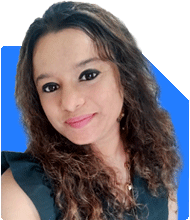What are the best mutual fund sectors for a 25-year investment with Rs.10 lakhs, medium risk, and wealth creation?
Ramalingam Kalirajan |10874 Answers |Ask -Follow
Mutual Funds, Financial Planning Expert - Answered on Aug 21, 2024
He has an MBA in finance from the University of Madras and is a certified financial planner.
He is the director and chief financial planner at Holistic Investment, a Chennai-based firm that offers financial planning and wealth management advice.... more

Hello Vivek ji. Pls suggest a few mutual fund sectors for investing 10 lakhs in SIP for a investment holding period 20-25 years. Goal is wealth creation and risk apatite is medium. Thanks
Why Sector Funds May Not Be Ideal
Sector funds focus on a specific industry, such as technology, healthcare, or banking. These funds can offer high returns, but they come with higher risk. The performance of sector funds is closely tied to the fortunes of that particular industry. If the sector underperforms, your entire investment could suffer.
Concentration Risk: Sector funds are exposed to concentration risk. If the chosen sector underperforms, your returns may be severely impacted.
Lack of Diversification: Sector funds lack diversification, as they focus on a single industry. Diversification is essential for managing risk, especially over a long-term horizon.
Given these factors, sector funds may not be the best choice for your medium-risk profile and long-term wealth creation goal.
The Case for Actively Managed Diversified Funds
Instead of sector funds, actively managed diversified funds are a better option. These funds invest across various sectors and industries, spreading the risk and potentially offering more consistent returns.
Professional Management: In actively managed funds, fund managers select and rotate sectors based on market conditions and economic trends. This allows for a more balanced and dynamic approach to investing.
Diversification: These funds spread investments across multiple sectors, reducing the risk of poor performance in any single sector.
Flexibility: The fund manager has the flexibility to shift allocations between sectors based on their research and market outlook, which can enhance returns over time.
Suggested Categories of Diversified Mutual Funds
Here are a few categories of diversified mutual funds that align with your goal of wealth creation and medium risk appetite:
1. Flexi-Cap Funds
Investment Strategy: Flexi-cap funds invest in companies of all sizes—large-cap, mid-cap, and small-cap—based on where the fund manager sees potential for growth.
Benefit: These funds offer flexibility in stock selection across market capitalizations, which can help balance risk and reward.
Suitability: Ideal for long-term wealth creation, as the fund manager can adjust the portfolio based on market conditions.
2. Large-Cap Funds
Investment Strategy: Large-cap funds focus on investing in well-established, blue-chip companies with a proven track record.
Benefit: These companies are less volatile and offer steady growth, making them a safer option within the equity space.
Suitability: Suitable for investors with a medium risk appetite who seek stability and consistent returns.
3. Multi-Cap Funds
Investment Strategy: Multi-cap funds invest across large, mid, and small-cap stocks, providing a diversified exposure to various market segments.
Benefit: These funds balance growth potential and stability, making them a good choice for long-term investors.
Suitability: Ideal for those who want a mix of stability from large caps and growth potential from mid and small caps.
4. Balanced or Hybrid Funds
Investment Strategy: Hybrid funds invest in a mix of equity and debt instruments, offering a balanced approach to risk and return.
Benefit: The debt component provides stability, while the equity component drives growth.
Suitability: These funds are suitable for medium-risk investors who want exposure to equity with a cushion of debt.
SIP Strategy for Long-Term Wealth Creation
1. Consistent Investment:
Stick to Your Plan: Invest consistently, regardless of market conditions. SIPs allow you to average out the purchase cost over time, which can enhance returns in the long run.
Increase SIP Over Time: As your income grows, consider increasing your SIP contributions. This can significantly boost your corpus over a 20-25 year period.
2. Regular Portfolio Review:
Annual Check: Review your portfolio annually to ensure it aligns with your financial goals and risk tolerance.
Rebalance When Needed: Rebalance your portfolio if certain funds underperform or if your financial goals change.
3. Stay Committed:
Long-Term Perspective: Stay committed to your investment plan for the entire 20-25 year period. This long-term approach is key to achieving substantial wealth creation.
Avoid Market Timing: Don’t try to time the market. Market timing is risky and can lead to missed opportunities. Focus on staying invested.
Why Avoid Index Funds and Direct Funds
1. Disadvantages of Index Funds:
Limited Returns: Index funds aim to replicate the performance of a specific index, offering average market returns. They lack the potential for outperformance.
No Downside Protection: Index funds are fully exposed to market downturns, as they do not have the flexibility to move out of underperforming sectors or stocks.
Lack of Active Management: These funds are passively managed, meaning there’s no professional fund manager making decisions to maximize returns.
2. Disadvantages of Direct Funds:
Lack of Guidance: Direct funds require you to make all investment decisions on your own. This can be challenging without professional guidance.
Potential for Mistakes: Without the advice of a Certified Financial Planner (CFP), you may make investment mistakes that could affect your returns.
Value of Regular Funds: Investing through a regular fund with a CFP gives you access to expert advice, fund management expertise, and ongoing support.
Final Insights
your goal of wealth creation over 20-25 years is achievable with the right strategy. Avoid sector funds due to their higher risk and lack of diversification. Instead, focus on actively managed diversified funds that offer flexibility, professional management, and a balanced approach to risk and reward. Stay committed to your SIPs, review your portfolio regularly, and avoid the pitfalls of index and direct funds. With this approach, you can confidently work towards your financial goals and build substantial wealth over time.
You may like to see similar questions and answers below
Ulhas Joshi |280 Answers |Ask -Follow
Mutual Fund Expert - Answered on Mar 05, 2024
Jinal Mehta | Answer |Ask -Follow
Financial Planner - Answered on Feb 25, 2024
Ramalingam Kalirajan |10874 Answers |Ask -Follow
Mutual Funds, Financial Planning Expert - Answered on May 26, 2024
Ramalingam Kalirajan |10874 Answers |Ask -Follow
Mutual Funds, Financial Planning Expert - Answered on Apr 23, 2024
Mayank Chandel |2569 Answers |Ask -Follow
IIT-JEE, NEET-UG, SAT, CLAT, CA, CS Exam Expert - Answered on Dec 08, 2025
Mayank Chandel |2569 Answers |Ask -Follow
IIT-JEE, NEET-UG, SAT, CLAT, CA, CS Exam Expert - Answered on Dec 08, 2025

Mayank Chandel |2569 Answers |Ask -Follow
IIT-JEE, NEET-UG, SAT, CLAT, CA, CS Exam Expert - Answered on Dec 08, 2025
Mayank Chandel |2569 Answers |Ask -Follow
IIT-JEE, NEET-UG, SAT, CLAT, CA, CS Exam Expert - Answered on Dec 08, 2025
Mayank Chandel |2569 Answers |Ask -Follow
IIT-JEE, NEET-UG, SAT, CLAT, CA, CS Exam Expert - Answered on Dec 08, 2025
Anu Krishna |1746 Answers |Ask -Follow
Relationships Expert, Mind Coach - Answered on Dec 08, 2025
Ramalingam Kalirajan |10874 Answers |Ask -Follow
Mutual Funds, Financial Planning Expert - Answered on Dec 08, 2025
Samraat Jadhav |2499 Answers |Ask -Follow
Stock Market Expert - Answered on Dec 08, 2025
Ramalingam Kalirajan |10874 Answers |Ask -Follow
Mutual Funds, Financial Planning Expert - Answered on Dec 08, 2025
Radheshyam Zanwar |6737 Answers |Ask -Follow
MHT-CET, IIT-JEE, NEET-UG Expert - Answered on Dec 08, 2025

























